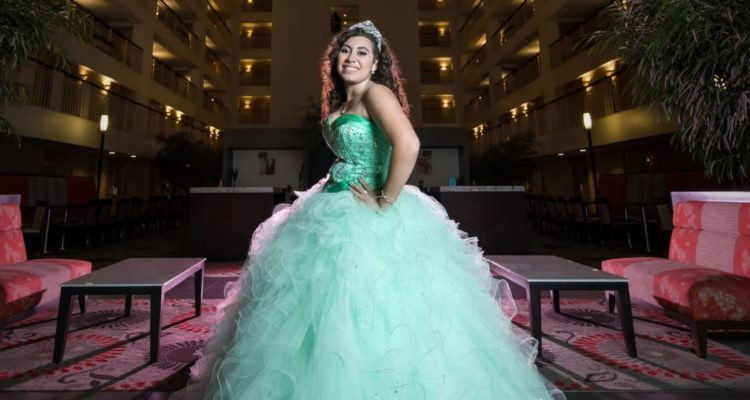The Path to Becoming an Adult (A Coming of Age Ceremony)
Most people go through that special time in every girl or boy’s life in which they go on the journey to become an adult. For example, in American culture we call this a Sweet 16, in Latin America it’s called a Quinceanera and in Judaism it’s called a Bat/Bar Mitzvah. A coming of age party can be religious or culturally based, but where did this idea of a coming of age party come from and how many other cultures celebrate this practice?

One of the earliest records of a coming of age ceremony traces backs to ancient Rome. In Ancient Rome, when a boy goes through puberty he is to shave off any sign of facial hair and swears himself to the protector of household. After that boys are to put on the ceremonial Toga Virilis (Toga of Manhood) and enroll into the military. For girls the transition from becoming a girl to a woman starts at marriage. Similar to males, the females would wear a ceremonial tunic called a Tunica Recta, which would be paired with a cingulum (belt), this represented fertility in her marriage. In 500 BC the Aztecs started the tradition of what we now call a quinceanera (sweet 15) and was taken by Spanish conquistadors and was introduced to Mexican culture. It is recorded that there are 28 coming of age parties or rituals still practiced around the world. There are surprisingly a lot of really interesting and unique ceremonies and rituals. Here are some still current coming of age ceremonies and rituals around the world.
· “GWANRYE/GYERYE” (KOREA)
Gwanrye is a Korean practice for men and women who are twenty and fifteen years old. It occurs on the third Monday of May. Men and Women are expected to put on traditional Korean attire, and they receive perfume, roses, and a kiss.
· “DEBUT” (PHILIPPINES)
When a girl turns 18 she picks 18 close friends and 18 family members who bring her eighteen presents. The celebrant invites 18 men who will bring her 18 roses.
· “RUMSPRINGA” (AMISH)
This tradition allows 16-year-olds to walk outside in the world on weekends. Rumspringa was created so that that they have a choice to continue to be Amish or join the outside world. Amish can be baptized until they are 26.
-
“Hamar cow jumping” (Ethiopia)
In Ethiopia, a coming of age ceremony is usually in the form of a bachelor party. The groom jumps naked over four adult bulls to symbolize transition into manhood.
-
“Bullet Ant Initiation” (Amazon)
When a boy had turned 13 in Sateré-Mawé tribe, he is to find bullet ants and weave them into gloves. After that he puts them on with the stingers from the ants facing towards his hand. This is a painful process and shows maturity and masculinity.
There seems to be a pattern of common themes when you look at all these different types of ceremonies and rituals, but why has humanity celebrated this idea that when one reaches the age of maturity he or she is awarded with milestone of maturity? According to Jennifer O’Donnell a writer from Very Well family, “The coming of age milestone is an important one, and can also be a difficult transition as some children are hesitant to leave childhood behind. Literature, the movies, and music often refer to the coming of age theme and the problems or challenges associated with the transition. There are many different ways to define the expression ‘of age.’ Confirmation of an individual as a responsible adult within a religious community, Puberty (or, in some cases, loss of virginity); Acquiring a legally significant age (in the United States, either 18 or 21) Experiencing a moment of epiphany in which childhood is set aside; Taking responsibility for oneself and one’s personal choices.” Personally, as a teen, I look and experience these practices with admiration. If you really think about it, a coming of age ceremony is an important part of one’s culture/ religion and we often celebrate these traditions for the sake of keeping them alive. Not only that, but the feeling of accomplishment and responsibility when reaching maturity is a special and personal experience that is celebrated by few.
A coming of age ceremony is not just a “party” – it’s a part of history, tradition, culture, and acceptance and it’s important that ceremonies and rituals like the ones previously mentioned aren’t misinterpreted. So whether it’s your birthday or maybe your voice is starting to crack, just remember it can’t be as bad as weaving ants into gloves and then wearing them.

